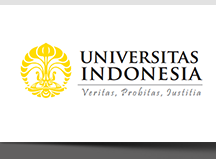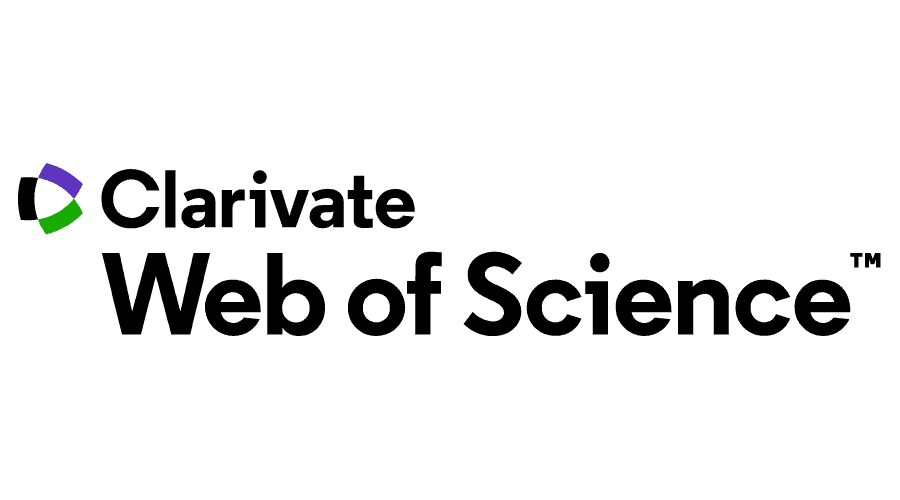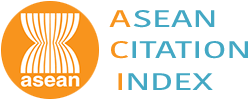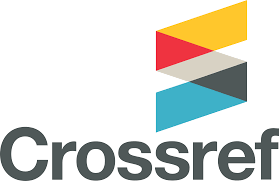Abstract
Research Aims: In developing and emerging economies, MSMEs are pivotal in generating income and fostering economic growth. However, in regions like Mindanao Island, Philippines, there are significant challenges to fostering equitable MSME-induced growth. This study delves into practices related to the marketing communications mix among micro and small enterprises in this region.
Design/Methodology/Approach: A mixed-methods approach is used, including quantitative analysis of the marketing communications mix practices among MSMEs, as well as qualitative analysis of interviews with micro and small enterprise owners.
Research Findings: The study reveals a significant difference between advertising assessments grouped according to years of operations, classification, nature, form of business, and the frequency of marketing communication. It also shows no significant difference in sales promotions, direct marketing, personal selling, and public relations when grouped according to profile.
Theoretical Contribution/Originality: In business classification, hybrid businesses are categorised into more than one type of business. Hence, the assessments in this study provide insights into the marketing communications mix practices of hybrid businesses in the context of MSMEs.
Managerial Implications in the South East Asian Context: The findings of the study offer valuable insights into the context of MSMEs in Southeast Asia, which can help rural businesses to strategise for sustainability and contribute to developing MSMEs by incorporating modern marketing practices and adapting technologies to enhance engagement and business growth.
Research Limitation & Implications: Limitations include the minimal consideration of external factors that influence the adoption of marketing practices, the study scope, and the study's limited study participants, which are businesses operating for more than one year.
References
Adan, J. L., & Ramos, R. G. (2023). Promotional strategies and consumers’ purchase intention on garment bazaar retailers. Open Journal of Business and Management, 11(2), 613-645. https://doi.org/10.4236/ojbm.2023.112033
Ali, A. (2024). Mastering personal selling techniques: Elevating your sales performance. In EasyChair Preprint 12193. Stockport: EasyChair. https://easychair.org/publications/preprint/7pMB
Amin, M., & Priansah, P. (2019). Marketing communication strategy to improve tourism potential. Budapest International Research and Critics Institute-Journal (BIRCI-Journal), 2(4), 160-166. https://doi.org/10.33258/birci.v2i4.575.
Anderson, R. E., Cohen, A. H., Christ, P. F., Mehta, R., & Dubinsky, A. J. (2020). Provenance, evolution, and transition of personal selling and sales management to strategic marketing channel management. Journal of Marketing Channels, 26(1), 28-42. https://doi.org/10.1080/1046669X.2019.1647913.
Bazergan, I., Zulkipli, Anshar, M. A., Lutfi, A., & Ikhram, A. A. (2021). The influence of Promotional Mix on customer savings decisions. Point of View Research Management, 2(2), 132-138.
Blake, J., Fourie, S., & Goldman, M. (2019). The relationship between sports sponsorships and corporate financial returns in South Africa. International Journal of Sports Marketing and Sponsorship, 20(1), 2-25. https://doi.org/10.1108/IJSMS-12-2016-0088.
Bondarenko, V., & Vyshnivska, B. (2023). Promotional marketing as a method of increasing sales. Three Seas Economic Journal, 4(2), 21-28. https://doi.org/10.30525/2661-5150/2023-2-3.
Brown, D. (2021, January 31). Are brochures effective for marketing in 2021? TechSling Weblog. Retrieved from https://www.techsling.com/are-brochures-effective-for-marketing-in-2021/
Chen, Y., Mandler, T., & Meyer-Waarden, L. (2021). Three decades of research on loyalty programs: A literature review and future research agenda. Journal of Business Research, 124, 179-197. https://doi.org/10.1016/j.jbusres.2020.11.057.
Cho, M., Park, S. Y., & Kim, S. (2021). When an organization violates public expectations: A comparative analysis of sustainability communication for corporate and nonprofit organizations. Public Relations Review, 47(1), 101928. https://doi.org/10.1016/j.pubrev.2020.101928.
Cowley, S., Humphrey Jr, W., & Muñoz, C. (2021). Industry certifications in digital marketing and media education: An examination of perceptions and use among educators. Journal of marketing education, 43(2), 189-203. https://doi.org/10.1177/0273475320948570.
James, E. E., & Inyang, I. B. (2022). Logistics management and marketing performance of small and medium-sized manufacturing firms. International Journal of Entrepreneurship and Business Innovation, 5(1), 1-15. https://doi.org/10.52589/IJEBI-D1D3KF26.
Abdeta, O. E., & Zewdie, S. (2021). The effects of promotional mix strategies on organizational performance: evidence from systematic review of literature. International Journal of Business and Economics Research, 10(6), 236-245. https://doi.org/10.11648/j.ijber.20211006.14.
Etuk, S., James, E. E., & Joseph, U. E. (2022). Marketing strategies and passengers' adoption of ride-hailing services. International Journal of Management & Entrepreneurship Research, 4(1), 59-73. https://doi.org/10.51594/ijmer.v4i1.288.
Aduana, I. G., Angeles, E. R., Angeles, D. R. G., & Fabian, D. R. B. Marketing mix strategies toward customer satisfaction of yufiro coffee in tanza, cavite: Basis for enhancement plan of marketing mix strategies. International Journal of Research in Education Humanities and Commerce, 05(01), 265–273. https://doi.org/10.37602/IJREHC.2024.5123.
Ganapati, S. (2025). The modern wholesaler: Global sourcing, domestic distribution, and scale economies. American Economic Journal: Microeconomics, 17(1), 1-40. https://doi.org/10.1257/mic.20210015.
National Economic and Development Authority. (2018, August 15). Goal 8 – decent work and economic growth—Sdgs—Philippines. National Economic and Development Authority Replubika Ng Pilipinas. Retrieved from https://sdg.neda.gov.ph/goal-8/
Gorji, M., & Siami, S. (2020). How sales promotion display affects customer shopping intentions in retails. International Journal of Retail & Distribution Management, 48(12), 1337-1355. https://doi.org/10.1108/IJRDM-12-2019-0407.
Gunawan, G., & Sulaeman, M. (2020). Determining factors in the use of digital marketing and its effect on marketing performance in the creative industries in Tasikmalaya. Budapest International Research and Critics Institute-Journal (BIRCI-Journal), 3(3), 2543-2550. https://doi.org/10.33258/birci.v3i3.1239.
Inyang, I. B., Etim, G. S., & James, E. (2022). Public relations strategies and the marketing performance of financial service providers. Quantitative Economics and Management Studies, 3(2), 173-174. https://doi.org/10.35877/454RI.qems757.
Ismail, M. D., Isa, M., & Md, A. (2021). Export performance of SMEs in emerging markets: The role of market orientation, learning and trust. The South East Asian Journal of Management, 15(1), 112-128. https://doi.org/10.21002/seam.v15i1.13072.
Jee, T. W. (2021). The perception of discount sales promotions–A utilitarian and hedonic perspective. Journal of Retailing and Consumer Services, 63, 102745. https://doi.org/10.1016/j.jretconser.2021.102745.
Kadir, A., Ridjal, S., & Sjahruddin, H. (2020). Personal selling, sales promotion, and intention revisit: the mediating role of reputation. European Journal of Business and Management Research, 5(6), 1-6. http://dx.doi.org/10.24018/ejbmr.2020.5.6.645.
Kant, S., & Adula, M. (2022). Mediation effect of customer satisfaction between promotion mix elements and customer buying behavior in education sector of Ethiopia. International Journal of Islamic Business and Management Review, 2(2), 174-181. https://doi.org/10.54099/ijibmr.v2i2.405.
Katakam, B. S., Bhukya, R., Bellamkonda, R. S., & Samala, N. (2021). Longitudinal analysis versus cross-sectional analysis in assessing the factors influencing shoppers’ impulse purchase behavior–Do the store ambience and salesperson interactions really matter?. Journal of Retailing and Consumer Services, 61, 102586. https://doi.org/10.1016/j.jretconser.2021.102586.
Kaveh, A., Nazari, M., van der Rest, J. P., & Mira, S. A. (2021). Customer engagement in sales promotion. Marketing Intelligence & Planning, 39(3), 424-437. https://doi.org/10.1108/MIP-11-2019-0582.
Kotler, P., & Keller, K. L. (2009). Marketing Management. London: Pearson International.
Marini, S., Aprilia, L. R., & Faot, A. M. T. (2021). Promotion mix implementation in accommodation businesses in the pandemic time Covid-19. Jurnal Kepariwisataan: Destinasi, Hospitalitas dan Perjalanan, 5(2), 14-22. https://doi.org/10.34013/jk.v5i2.349.
Bacares, N. E. (2021). Citizens’ satisfaction on economic and investment promotion services of a coastal town in Camarines Sur, Philippines. EPRA International Journal of Multidisciplinary Research ), 7(4), 263–269.
Kim, T., & Phua, J. (2020). Effects of brand name versus empowerment advertising campaign hashtags in branded Instagram posts of luxury versus mass-market brands. Journal of Interactive Advertising, 20(2), 95-110. https://doi.org/10.1080/15252019.2020.1734120.
Akam, M. J., Sunday, E. G., Etuk, I. U., Ejikeme, O. B., & Arikpo, N. N. (2023). The role of integrated coordination in supply chain performance of firms in the manufacturing industry. International Journal of Integrated Supply Management, 16(1), 26-51. https://doi.org/10.1504/IJISM.2023.127650.
O’Hara, J. K., & Low, S. A. (2020). Online sales: A direct marketing opportunity for rural farms?. Journal of Agricultural and Applied Economics, 52(2), 222-239. https://doi.org/10.1017/aae.2019.44.
Pollák, F., & Markovič, P. (2021). Size of business unit as a factor influencing adoption of digital marketing: Empirical analysis of SMEs operating in the central European market. Administrative Sciences, 11(3), 71. https://doi.org/10.3390/admsci11030071.
Ricafort, M. V., & Borbon, N. M. D. (2020). Status of marketing strategies towards tourist attraction and local products: In the case of Lobo, Batangas, Philippinses. International Journal of Research, 9(7), 91-96. https://doi.org/10.5861/ijrse.2020.5917.
Santini, F. D. O., Ladeira, W. J., Sampaio, C. H., & Boeira, J. P. (2020). The effects of sales promotions on mobile banking a cross-cultural study. Journal of Promotion Management, 26(3), 350-371. https://doi.org/10.1080/10496491.2019.1699622
Stern, A. (2020, October 23). PR in a pandemic: The key to securing coverage now. 3E PublicRelations. Retrieved from https://www.3epr.com/pr-in-a-pandemic-the-key-to-securing-coverage-now/.
Strijker, D., Bosworth, G., & Bouter, G. (2020). Research methods in rural studies: Qualitative, quantitative and mixed methods. Journal of Rural Studies, 78, 262-270. https://doi.org/10.1016/j.jrurstud.2020.06.007.
Suryani, T., Fauzi, A. A., & Nurhadi, M. (2020). The determinant of website quality and e-service quality at SME In Indonesia. Jurnal Manajemen Dan Kewirausahaan, 22(2), 131-141. https://doi.org/10.9744/jmk.22.2.131-141.
Tadeo, J. B., Mendoza, X. L. D., Tabor Jr, F., Dumagat, S. M., & Pamintuan, R. Q. (2023). Understanding economic contributions of MSMEs among Philippine Regions. Journal of Management, Economics, & Industrial Organization (JOMEINO), 7(3), 1-15. http://doi.org/10.31039/jomeino.2023.7.3.1.
Tiwary, N. K., Kumar, R. K., Sarraf, S., Kumar, P., & Rana, N. P. (2021). Impact assessment of social media usage in B2B marketing: A review of the literature and a way forward. Journal of Business Research, 131, 121-139. https://doi.org/10.1016/j.jbusres.2021.03.028.
Todua, N., & Vashakidze, B. (2020). The use of social media marketing in personal selling. Globalization and Business, 10, 121-129. https://doi.org/10.35945/gb.2020.10.015.
Toling, R. (2021). Promotional strategy preferences and buying decisions of western appliances customers. International Journal of Academe and Industry Research, 1(2), 1-24.
Zhang, J. Z. (2022, July 19). How paper catalogs remain relevant in a digital age. Harvard Business Review. Retrieved from https://hbr.org/2022/07/how-paper-catalogs-remain-relevant-in-a-digital-age.
Recommended Citation
Urbiztondo, Marge Ethan A.
(2025)
"Marketing Communications Mix Practices Among Micro and Small-Scale Enterprises,"
The South East Asian Journal of Management: Vol. 19:
No.
1, Article 1.
DOI: 10.7454/seam.v19i1.1777
Available at:
https://scholarhub.ui.ac.id/seam/vol19/iss1/1
Included in
Advertising and Promotion Management Commons, Entrepreneurial and Small Business Operations Commons, Marketing Commons












